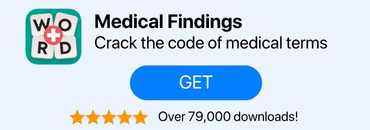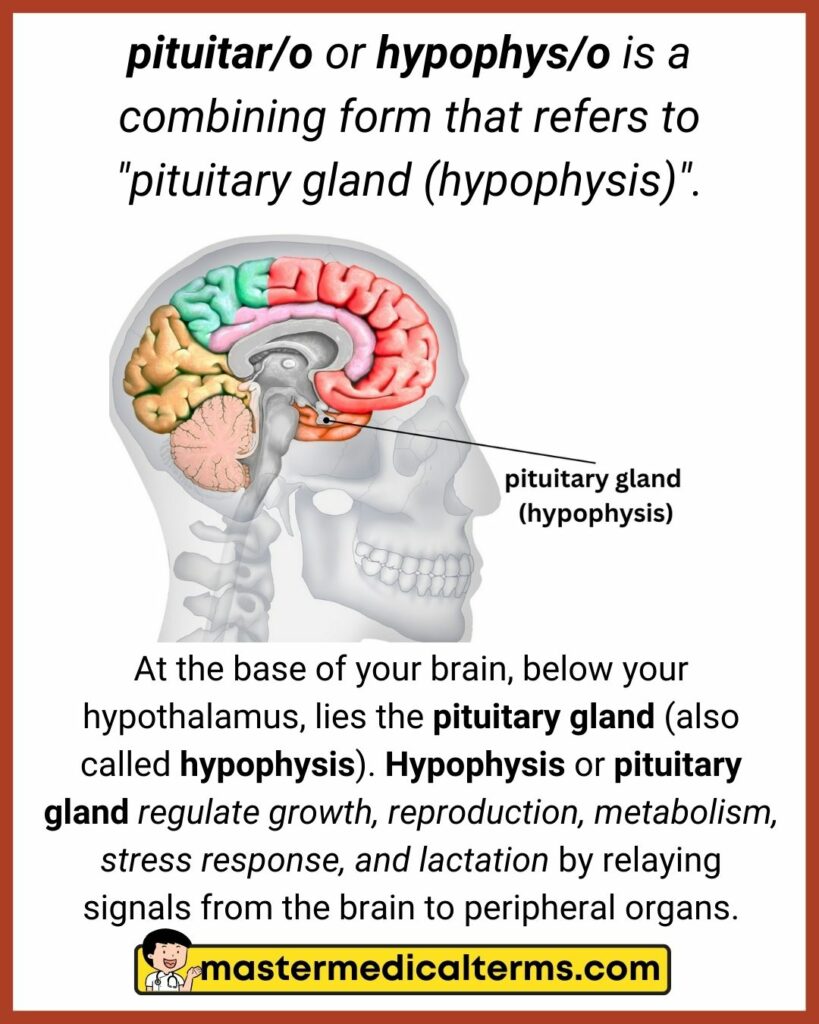With the help of this flashcard review list, you will be able to identify and understand the female endocrine system’s combining forms and root words. Check out the quiz version of this flashcard if you want to see how much you remember.
#1 aden/o
#2 adren/o, adrenal/o
adren/o or adrenal/o is a combining form that refers to "adrenal gland" or "epinephrine".
On top of the kidneys, adrenal glands are endocrine glands. The adrenal glands produce several key hormones, including cortisol, aldosterone, and adrenaline (epinephrine). Several bodily functions are regulated by these hormones, such as metabolism, blood pressure, and the stress response.
#3 adrenocortic/o
adrenocortic/o is a combining form that refers to "adrenal cortex".
The adrenal cortex is the outermost part of the adrenal gland that secretes hormones that are crucial to the functioning of your body. Among these hormones are cortisol (used to regulate metabolism and handle stress) and aldosterone (used to regulate blood pressure).
#4 calc/i
#5 endocrin/o
endocrin/o is a combining form that refers to "endocrine glands or system".
The endocrine gland releases hormones straight into the bloodstream and distributes them to tissues and organs throughout the body. The endocrine glands play a key role in controlling many body functions, including growth and development, metabolism, and fertility. Pituitary, thyroid, and adrenal glands are examples of endocrine glands.
#6 insul/o
insul/o is a combining form that refers to "pancreatic islets".
A pancreatic islet, also known as an islet of Langerhans, is a cluster of cells in your pancreas. The pancreas produces hormones to help your body break down food. The pancreatic islets produce glucagon and insulin. Alpha cells in the pancreatic islets release the hormone glucagon in the body when blood glucose levels fall.
#7 kal/i
kal/i is a combining form that refers to "potassium".
Potassium primary function in the body is to help maintain the normal level of fluid within our cells. Its opposing mineral, sodium, ensures normal fluid levels outside the cell. Additionally, potassium supports blood pressure regulation and facilitates muscle contraction.
#8 natr/o
#9 parathyr/o, parathyroid/o
parathyr/o or parathyroid/o is a combining form that refers to "parathyroid gland".
The parathyroid glands are situated behind the thyroid at the base of your neck, roughly the size of a rice grain. The parathyroid glands produce parathyroid hormone, which assists in maintaining a healthy balance of calcium in the bloodstream and in tissues that rely on calcium.
#10 pituitar/o, hypophys/o
pituitar/o or hypophys/o is a combining form that refers to "pituitary gland (hypophysis)".
At the base of your brain, below your hypothalamus, lies the pituitary gland (also called hypophysis). Hypophysis or pituitary gland regulate growth, reproduction, metabolism, stress response, and lactation by relaying signals from the brain to peripheral organs.
#11 thyr/o, thyroid/o
thyr/o or thyroid/o is a combining form that refers to "thyroid gland".
The thyroid gland is an endocrine gland located in the neck. It secretes two hormones into the bloodstream: thyroxine (T4) and triiodothyronine (T3). These hormones are crucial for controlling the body's metabolic rate, the function of the heart, muscles, and digestive system, as well as the development of the brain and maintaining bone health.














